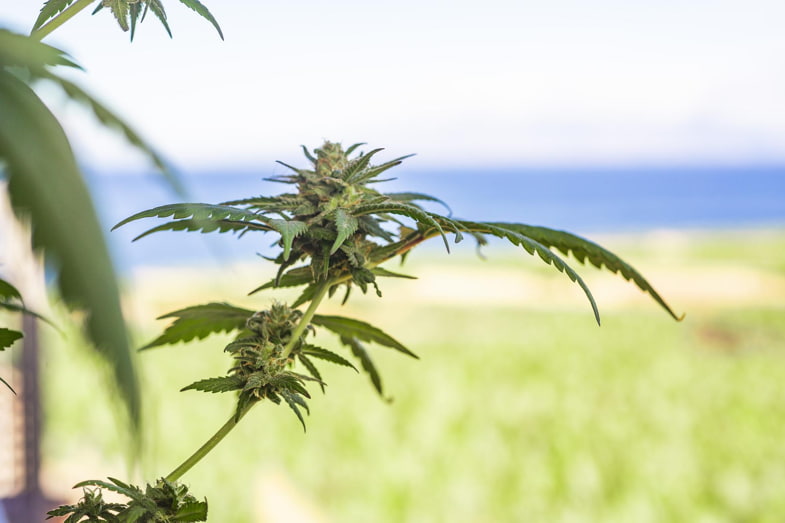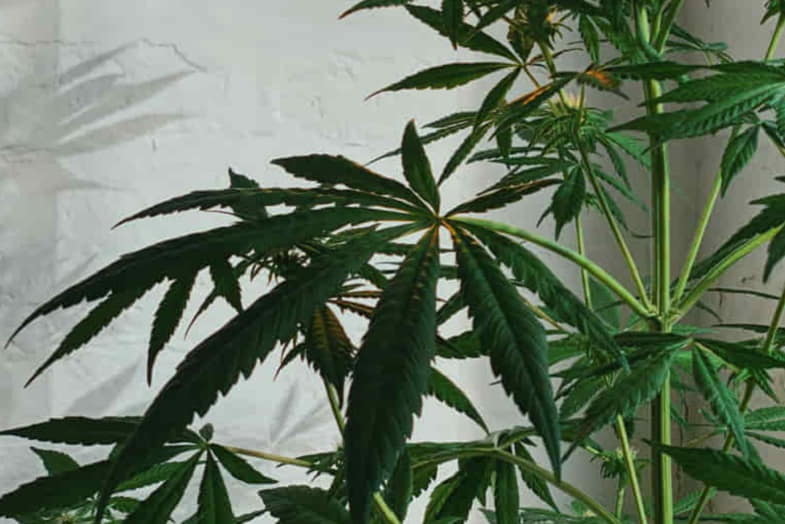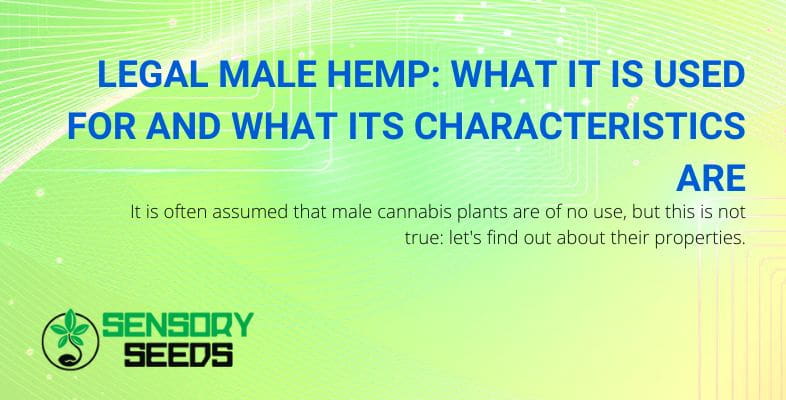Modified on: 03/10/2023
It is often assumed that male cannabis plants are of no use, but this is not true: let’s find out about their properties.
Those with some knowledge of cannabis cultivation know that the inflorescences enjoyed by its admirers come from female, non-pollinated plants. What, then, is the intended use of the male plants? Some people consider them useless, but they can be used in several contexts: let’s see which.
Why many growers dislike male plants
Legal male cannabis is not much liked by growers, as it could pollinate the female version and produce light marijuana seeds while excluding the production of unfertilized female flowers, which are naturally rich in THC.
To produce this inflorescence, growers prefer feminized marijuana, using seeds that guarantee a 100% chance of a female seedling developing. Also, such seeds often come from plants that have undergone hormone treatment.
This means that male seedlings are sometimes discarded right from the start. But this is not always the case: male cannabis can typically be beneficial and even indispensable.
Read also: Where is cannabis legal? These are the laws on marijuana in Europe and the world.
When and how to use male hemp seedlings
One of the primary uses of legal male cannabis seedlings concerns the production and marketing of seeds. In addition, industrial growers of light marijuana typically create particular crosses between different varieties to create hybrids with specific characteristics. To achieve this, male plants are indispensable, as they pollinate the female plant to produce a new species and to obtain its seeds.
Male hemp plants can also be used in several other contexts, including:
- the production of textile fibres, considering that the male plant is much more flexible and elastic than the female version;
- the production of herbal teas, cosmetics and herbal products;
- the preparation of mulches and organic fertilizers.
These are just a few of the many uses of male cannabis plants.
The distinction between male and female plants


A couple of weeks after flowering, marijuana plants generally begin their sexual maturation period, which is completed within a couple of months. Female plants are the most popular with growers because the flowers are covered with a resinous layer, which is very rich in cannabinoids: THC or, in the case of light marijuana, CBD.
The resin covering the flowers is necessary to facilitate fertilization: in fact, it is this resin that captures male pollen and allows fertilization to take place. Once fertilized, the plant will produce seeds to ensure the continuation of the species.
When female plants are kept away from the male pollen, they produce more resin to be able to capture the pollen anyway: this means that the plant uses all its energy to make the resin while avoiding producing the seeds.
Male plants have a somewhat different structure. They are taller, with very thick stems and fan-shaped leaves. In addition, pollen sacs appear at the points where the branches join the main stem a couple of weeks after flowering.
Read also: THCP: everything you need to know about the new cannabinoid discovered by Italian research
Why is it good not to eliminate male cannabis plants?
It is essential to remember that male cannabis plants are indispensable for the continuation of the species. Moreover, it is precise with male plants that unique hybrids can be created and suitable for preparing textiles, cosmetics, and foodstuffs.


Soon after flowering, it becomes possible to distinguish between male and female plants. Still, before eliminating male plants, it is good to realize that they can prove ideal in many situations. For example, if fully grown, they still contain a good percentage of cannabinoids and produce a lot of pollen, with the advantage of faster growth than female plants.
Therefore, if seeds thought to be female plants should produce male specimens, the advice is to let them develop to the end.
Without forgetting that, especially during the development phase, cannabis plants, whether male or female, are still rich in critical active ingredients, including phenols and antioxidants.
Excellent cannabis juice can be obtained from all parts of the plant, excluding only the more woody branches. The pollen can also be used in cooking to prepare baked goods. In industrial cultivation, male plants are often used to produce suitable fabric for making linen and handkerchiefs.
Suggestions for using cannabis for the home and the natural environment
The hemp plant has been known since ancient times, and today it is appreciated for its versatility and numerous benefits.
In addition to the active ingredients beneficial for pharmacological products, cannabis is a reasonable pest control and repellent: when grown in the garden, it helps keep flies and mosquitoes away.
Fresh, tender leaves applied to the skin can help reduce the signs of bruising, while in agriculture, it can help protect crops from pests and weeds due to its high terpene content.
The plant’s deep roots are beneficial for aerating the soil, making it an ideal crop for field rotation or improving fallow land quality.
When the plant has reached the end of its life cycle, and the leaves begin to fall off, it can still be used as a natural fertilizer, rich in vitamins and minerals.
To start learning more about the world of cannabis, SensorySeeds is the place to buy the best quality seeds, selected and guaranteed for collectors.









